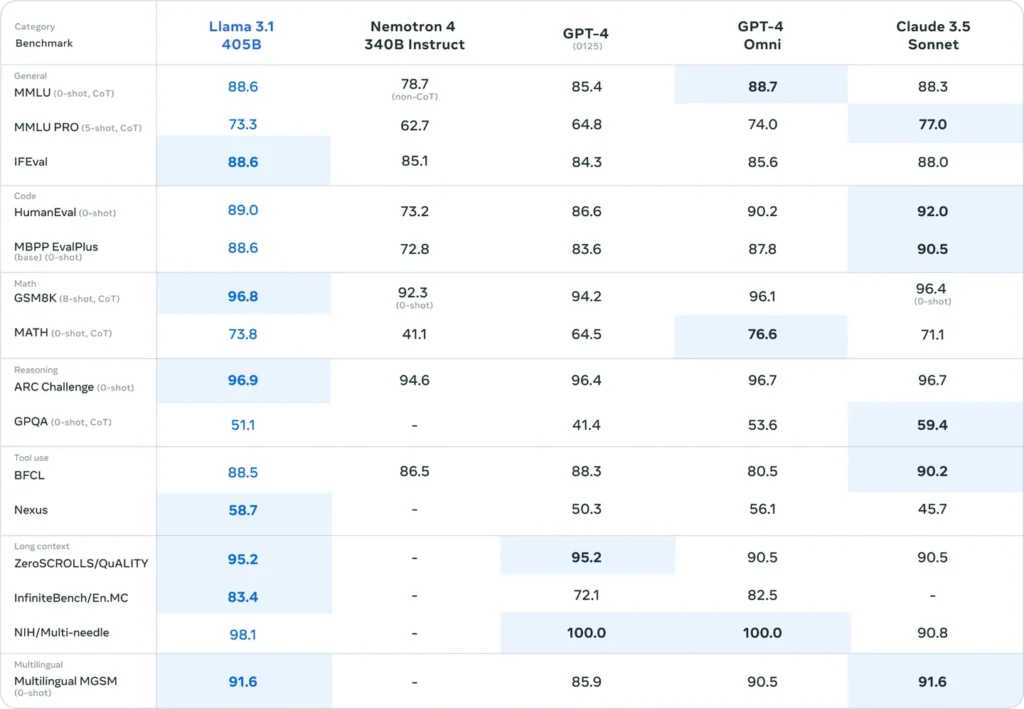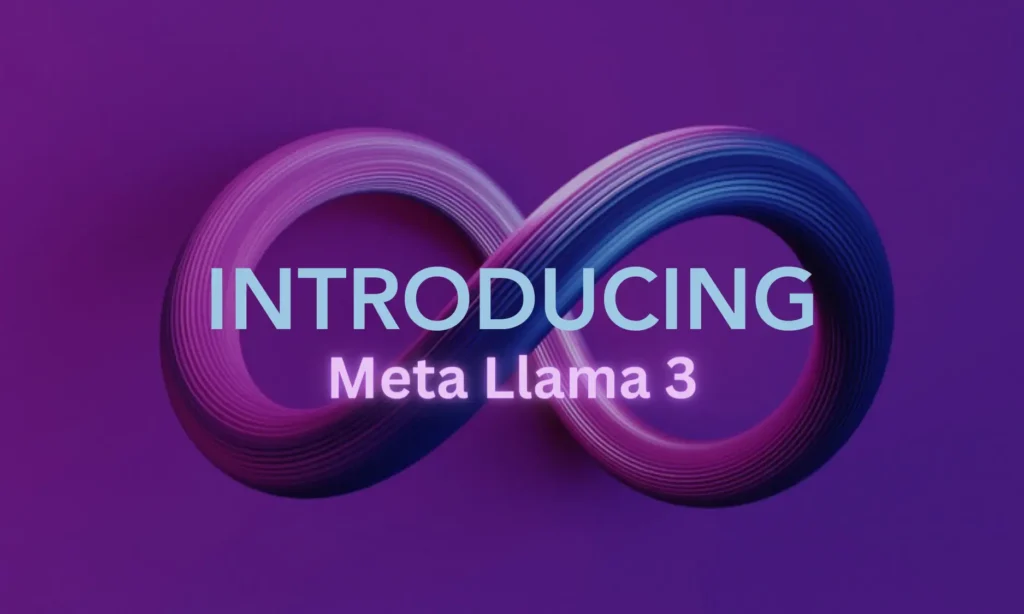Hey tech enthusiasts! Are you ready for some exciting news from Meta? Buckle up because Llama 3.1, Meta’s latest AI innovation, is here, and it’s set to revolutionize the AI landscape. In this post, we’re going to break down everything you need to know about Llama 3.1 in simple, easy-to-understand language. So, let’s dive in!
What’s All the Buzz About Llama 3.1?
Back in April, Meta gave us a teaser about developing a game-changing AI model. And guess what? Today, that promising model has landed. Llama 3.1 is now officially the largest open-source AI model ever released, and it’s already making waves by outperforming top competitors like OpenAI’s GPT-4o and Anthropic’s Claude 3.5 Sonnet on several benchmarks.
Llama 3.1 vs. The Rest

Llama 3.1 is a giant leap from its predecessors, bringing in a staggering 405 billion parameters, making it significantly more complex and capable. It has been trained on over 16,000 Nvidia H100 GPUs, which are some of the most powerful and expensive GPUs available. Meta isn’t sharing the exact cost of this massive endeavor, but it’s safe to say it runs into hundreds of millions of dollars.
Why Give Llama 3.1 Away?

You might be asking, why would Meta spend so much money only to give away Llama 3.1 for free? According to Mark Zuckerberg, the vision is bigger than just holding proprietary technology. He believes open-source AI models are the future, drawing a parallel to how Linux evolved to become the backbone of most of our digital world today. By making Llama 3.1 open-source, Meta aims to foster rapid improvements and innovations, much like they benefited from their Open Compute Project earlier.
The Open-Source Advantage
Zuckerberg predicts Llama 3.1’s release will mark an inflection point, where developers start leaning heavily towards open-source models. Meta is working with big names like Microsoft, Amazon, Google, Nvidia, and Databricks to ensure Llama 3.1 is put to good use. The goal is to allow developers to train the model on custom data and fine-tune it, reducing their costs by roughly half when compared to running OpenAI’s GPT-4o.
Diving Into the Technicals
Although Meta is tight-lipped about the specific data it used for training Llama 3.1 — likely to avoid legal hurdles — they did reveal that synthetic data played a role. This means smaller versions of Llama (with 70 billion and 8 billion parameters) were used to help train this colossal model. According to Meta’s VP of generative AI, Ahmad Al-Dahle, Llama 3.1 could become a “teacher for smaller models,” making it a versatile tool for developers.
The Future of AI: Quality Training Data
One pressing question in the AI community is whether we’re running out of high-quality training data. While Al-Dahle acknowledges this concern, he believes we still have some quality training runs left. Meta’s cautious optimism suggests they’re constantly innovating to stay ahead.
Llama 3.1: Safety and Ethical Checks
For the first time, Meta’s team included cybersecurity and biochemical considerations in its “red teaming” or adversarial testing of Llama 3.1. The goal? To ensure that the model can safely tackle complex queries by integrating seamlessly with a search engine API and other tools. For example, it can fetch housing market data and generate Python code to analyze it, making it immensely practical for real-world applications.
Meet Meta AI: Llama 3.1 in Action
What’s exciting is how Llama 3.1 will impact everyday users through Meta AI, a general-purpose chatbot similar to ChatGPT. Starting this week, Llama 3.1 will be available through WhatsApp and the Meta AI website in the US, with future rollouts planned for Instagram and Facebook. And it won’t just stick to English; the assistant will also support languages including French, German, Hindi, Italian, and Spanish.
Cost Efficiency and Scalability
For now, while the most advanced 405-billion parameter model of Llama 3.1 is free for use in Meta AI, Meta will switch to the 70-billion parameter model after reaching an unspecified number of prompts within a week. This indicates the higher model’s running costs are considerable. However, more detailed usage guidelines will be provided by Meta as they monitor early use.
Personalizing Your AI Experience
One of the cool new features in Meta AI is “Imagine Me,” which uses your phone’s camera to capture your likeness and insert it into AI-generated images. This enhancement side steps potential misuse related to deepfakes, allowing users to create more personalized AI media safely. The demand for such personalized AI-generated content is high, and Meta is eager to meet it.
AI in the Meta Ecosystem
Llama 3.1 isn’t just confined to messaging apps. It’s also making an entry into Meta’s Quest headset, replacing the existing voice command interface. Just like in Meta Ray-Ban glasses, you’ll be able to use Meta AI on Quest to identify and learn about objects in the real world shown through the headset’s passthrough mode.
The Road Ahead
Mark Zuckerberg is optimistic that by the end of this year, Meta AI will become the most-used chatbot, surpassing even ChatGPT, which currently boasts over 100 million users. While Meta hasn’t shared specific numbers yet, they’re confident that their AI assistant is on the brink of realizing its full potential. As Al-Dahle says, the AI industry is still finding its product market fit, hinting at much more to come.
Conclusion
Meta’s Llama 3.1 signifies a significant step forward in the AI world. By making such a powerful model openly accessible, Meta might be setting the stage for unprecedented innovation, driving us toward a future where AI is more integrated and beneficial in our daily lives. For more on how Llama 3.1 is revolutionizing AI, check out Introducing Meta Llama 3: Revolutionizing the World of AI and Transform Your Code with MiniCPM + Llama3.
What do you think about Llama 3.1 and Meta’s approach to making AI technology more accessible? Are you excited to use Meta AI in your favorite apps? Let us know in the comments below! Stay tuned for more exciting updates on this topic – the AI revolution is just getting started, and with Llama 3.1, you won’t want to miss a thing.



